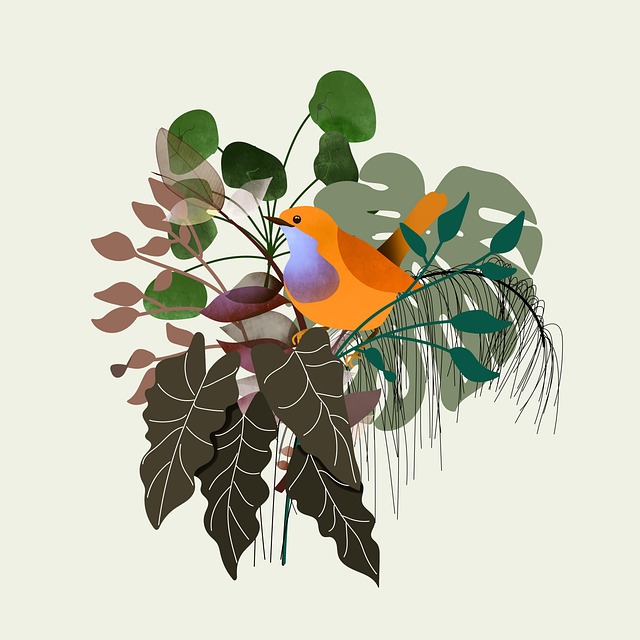Graphic Design principles, including balance, contrast, and hierarchy, form the basis for visually appealing designs across mediums. Skilled designers use layout, typography, and imagery to convey messages, fostering engagement in a digital age. Adobe Creative Suite and emerging tools enhance workflow, while branding creation focuses on unique visual narratives and storytelling. Web and print design require tailored considerations, with AI integration and sustainability trends shaping the evolving Graphic Design landscape.
ProfessionalGraphic Design is an art that combines aesthetics, messaging, and technology to create visually compelling content. This comprehensive guide explores key aspects of graphic design, from understanding fundamental principles and the power of visual communication to mastering industry-standard tools and software. We delve into branding and identity creation, as well as web and print design considerations. Plus, discover industry trends and gain insights into the future outlook of this dynamic field.
Understanding Graphic Design Principles

Understanding Graphic Design Principles is a fundamental step for any aspiring or professional graphic designer. It involves grasping key concepts such as balance, contrast, alignment, and hierarchy, which form the backbone of visually appealing and effective designs. These principles guide the arrangement of elements on a page, ensuring that text, images, and other components work together harmoniously to convey a message.
By applying these principles, graphic designers can create layouts that are not only aesthetically pleasing but also functional. For instance, balance ensures that the design feels stable and grounded, while contrast draws attention to important elements. Alignment improves readability by organizing content logically, and hierarchy helps viewers understand the design’s focal points. Mastering these principles empowers designers to transform ideas into impactful visual communications in various mediums, from print to digital platforms.
The Role of Visual Communication

In the realm of professional graphic design, visual communication plays a pivotal role in conveying messages and capturing audiences’ attention. Skilled designers understand that visuals have the power to transcend language barriers, instantly evoking emotions, ideas, and narratives. Through carefully crafted layouts, typography, color schemes, and imagery, graphic design transforms complex information into accessible and engaging content.
Effective visual communication is an art that involves strategically utilizing various elements to create meaningful connections with viewers. In today’s digital era, where folks are constantly bombarded with information, compelling graphics stand out as game changers, ensuring messages resonate and leave a lasting impression. Whether it’s designing for print media, websites, social media, or branding materials, the ultimate goal is to enhance understanding, foster engagement, and drive action through the power of visual storytelling.
Tools and Software for Designers

In the realm of graphic design, the right tools and software can significantly enhance a designer’s workflow and creative capabilities. Modern graphic designers leverage a wide array of digital applications tailored to meet diverse design needs, from vector illustration to photo editing and layout composition. Industry standards like Adobe Creative Suite, with its powerful programs such as Photoshop, Illustrator, and InDesign, dominate the market due to their advanced features and seamless integration. These tools enable designers to create intricate visuals, ensuring accuracy and efficiency throughout the design process.
Beyond industry giants, emerging software and innovative platforms continue to reshape the graphic design landscape. Open-source alternatives offer cost-effective solutions for aspiring designers, while specialized applications cater to specific niches like branding or animation. With ongoing technological advancements, designers can look forward to even more sophisticated tools that streamline their creative processes, ultimately elevating the art of Graphic Design.
Branding and Identity Creation

In the realm of graphic design, branding and identity creation are paramount. Professional Graphic Design experts understand that a brand is more than just a logo; it’s a comprehensive visual narrative that communicates a company’s essence, values, and purpose. Through meticulous research, market analysis, and creative synergy, designers craft unique brand identities that resonate with target audiences, fostering immediate recognition and loyalty.
This process involves harmonizing typography, color palettes, imagery, and layout to create a cohesive visual language. Effective branding isn’t just about aesthetics; it’s about storytelling. Skilled Graphic Designers translate abstract concepts into tangible designs that not only attract but also engage, ensuring the brand leaves a lasting impression in today’s competitive marketplace.
Web and Print Design Considerations

In the realm of Graphic Design, whether for web or print mediums, understanding the unique considerations of each platform is paramount. Web design demands a delicate balance between aesthetics and functionality, ensuring visual elements seamlessly integrate with user interfaces. Designers must be adept at creating responsive layouts that adapt gracefully across various devices and screen sizes. This involves a keen eye for typography, color theory, and compositional techniques tailored to digital viewing experiences.
Conversely, print design offers a canvas where creativity can flourish without the constraints of interactivity. From brochures and magazines to logos and branding materials, print design leverages high-quality visuals, intricate details, and rich textures. Designers engage in meticulous layout planning, considering paper stocks, color printing techniques, and finishing options to produce tangible outputs that make a lasting impression. Both web and print design require a deep understanding of audience engagement and brand identity, ultimately contributing to the success of any Graphic Design project.
Industry Trends and Future Outlook

The world of graphic design is constantly evolving, with new technologies and trends emerging that shape the industry’s future. One prominent trend is the increasing integration of Artificial Intelligence (AI) in creative processes. AI-powered tools are now assisting designers by automating repetitive tasks, generating design concepts, and enhancing productivity without compromising creativity. This technology allows designers to focus more on strategic thinking and conceptual development.
Looking ahead, sustainability and ethical practices are likely to play a significant role in the industry’s growth. Clients and consumers are becoming increasingly conscious of the environmental impact of design choices, leading to a demand for eco-friendly printing methods, recycled materials, and sustainable design solutions. As the field of graphic design continues to evolve, staying informed about these trends will be crucial for professionals to remain competitive and meet the changing demands of the market.
